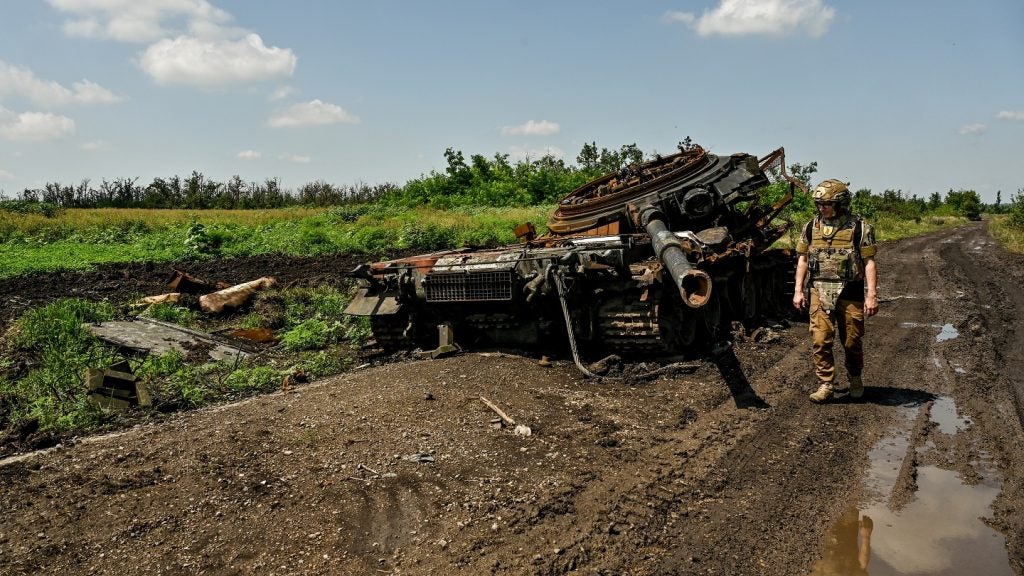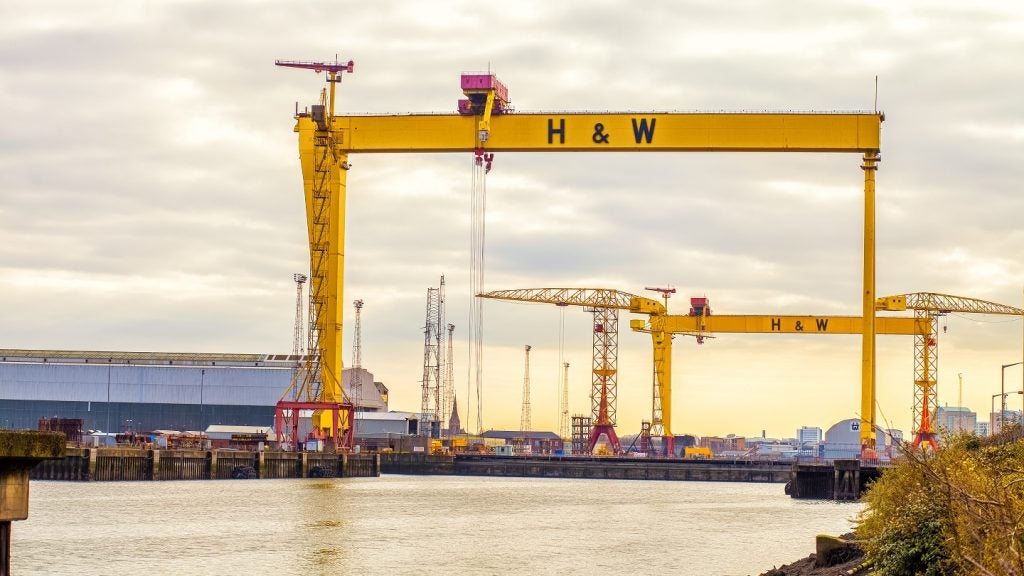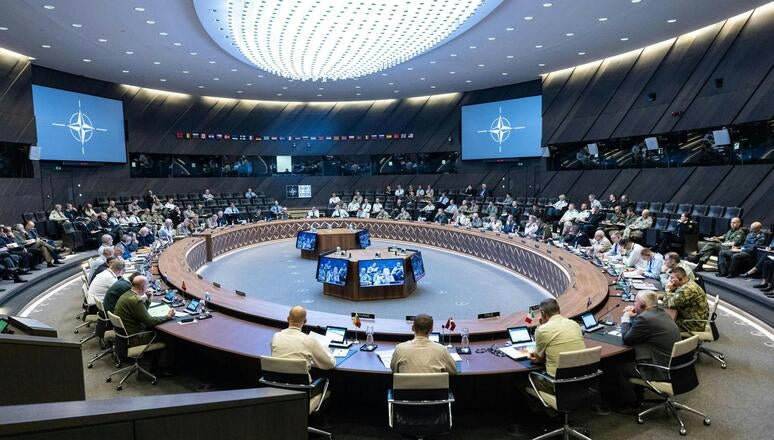The UK Ministry of Defence (MoD) has estimated the Russian invasion of Ukraine, now 631 days old, to have cost Moscow more than 2,400 main battle tanks (MBTs) – equivalent to around 15% of its pre-war inventory.
The figures, released on 13 November as a UK parliamentary written response, also detailed Russian equipment losses to be “over 7,117 armoured vehicles”, including 2,475 MBTs and 1,300 artillery systems. In the air and maritime domains, the UK has estimated Russian losses to include 93 fixed-wing aircraft, 132 helicopters, 320 uncrewed aerial vehicles, and 16 naval vessels of all types.
In terms of military personnel losses, the MoD estimated that Russia has sustained 302,000 killed or wounded during operations. Russian losses from private military contractors, such as the Wagner Group, which have played a significant role in Russia’s invasion of Ukraine, are not included in the casualty figures but are thought to be around 100,000, bringing the potential total Russian casualty figure to up to 400,000.
Ukraine’s own figures for Russian combat losses are considerably more inflated in term of equipment, claiming some 5388 tanks of various types, 10,171 armoured personnel carriers, and over 8,500 artillery and guided rocket systems. In aviation, Kyiv is claiming Russian losses are nearly 650 fixed- and rotary-wing platforms, along with over 5,600 UAVs.
In terms of Russian personnel losses, Ukraine states that it has recorded over 315,000 Russian military personnel killed in action. Fighting in the first year of the war was thought to have resulted Russia and Ukraine sustained a combined total of 300,000 casualties.
Russian vehicle losses likely unsustainable
GlobalData analysis of the Russian defence market forecast that its defence budget is anticipated to grow from $47.2bn in 2023 to reach $54.3bn in 2027 with a compound annual growth rate (CAGR) of 3.5% over the period. Russian defence acquisition spending is also anticipated to increase from $27bn in 2023 to reach $30.9bn in 2027, reflecting a CAGR of 3.4%.
According to GlobalData Russia’s land inventory prior to its invasion of Ukraine indicate a potential fleet of 16,970 tanks, comprised of 550 1990s era T-90s, 3,450 T-80s and 8,950 T-72s from the 1970s, with a further 2,000 T-64s and 2,400 T-62s, originating from the 1960s. Of the new T-14 Armata MBTs, Russia was thought to hold around 20 in its order of battle.
It is commonplace for inventories to reflect vehicles in service and reserve, but also those being cannibalised for use as spares and repairs platforms, such as disclosed by the UK for its Challenger 2 MBT fleet earlier this year.
As a percentage, Russia’s supposed 2,475 MBTs destroyed in the Ukraine war constitute around 15% of its total inventory. However, a greater proportion of the losses will be from the more advanced T-90s, T-80s, and T-72s, with a significant amount of backfilling or regeneration of armoured capability being done through use of bringing back into service legacy equipment.
GlobalData research in December 2022 calculated that Russia's equipment loss in the first ten months of the war in Ukraine had cost Moscow more materiel than was seen in both Chechen wars combined.
Can Ukraine exploit Kherson salient?
Western officials have spoken of Russia’s land forces as having been set back by 30 years, in terms of equipment and personnel losses, with tactics now akin to human wave style operations in a bid to swamp Ukrainian defensive positions along the frontline in the south and east of the country.
The ability for Russia to replenish its equipment losses is likely limited in the near term, with considerable manpower that would otherwise be utilised in the country’s defence industrial base having been diverted, through a series of partial civilian mobilisation efforts, to the frontlines in Ukraine.
Ukraine’s counteroffensive has seemingly not had the success that was initially hoped for, with Russian defences proving extremely difficult to overcome even with the armour and other materiel provided to Kyiv by its Western backers. However, elements of three Ukrainian brigades have crossed the Dnipro River near Kherson, establishing small bridgeheads up to 4km in depth that could be exploited if able to be reinforced.
In ongoing fighting around Avdiivka, Russian forces are understood to be sustaining hundreds of casualties per day, with armoured vehicle losses considered to be more than can be produced or sustained by a Russian defence industrial base which has been impacted by ongoing Western sanctions and reduced labour forces following mobilisation.
As winter reduces operations down to the tactical level, it is likely that aspirations from both Ukraine and Russia will focus on maximising local gains, while utilising deep strike fires, such as Kyiv’s Storm Shadow cruise missiles, to degrade logistics and command and control nodes.












